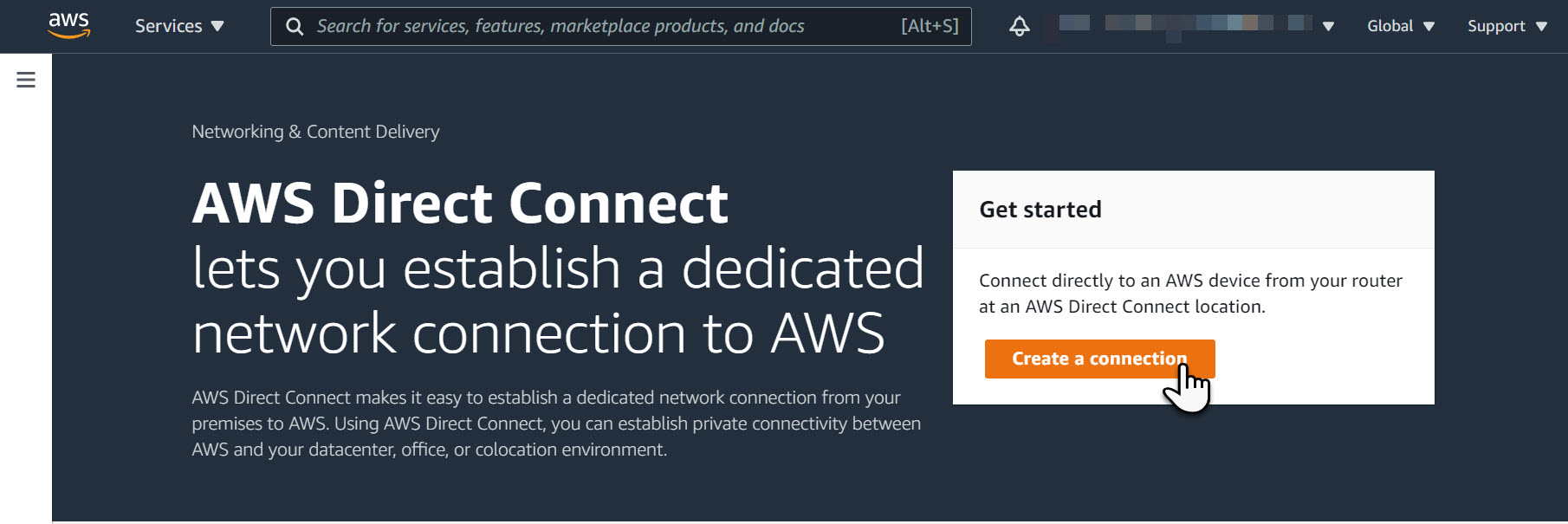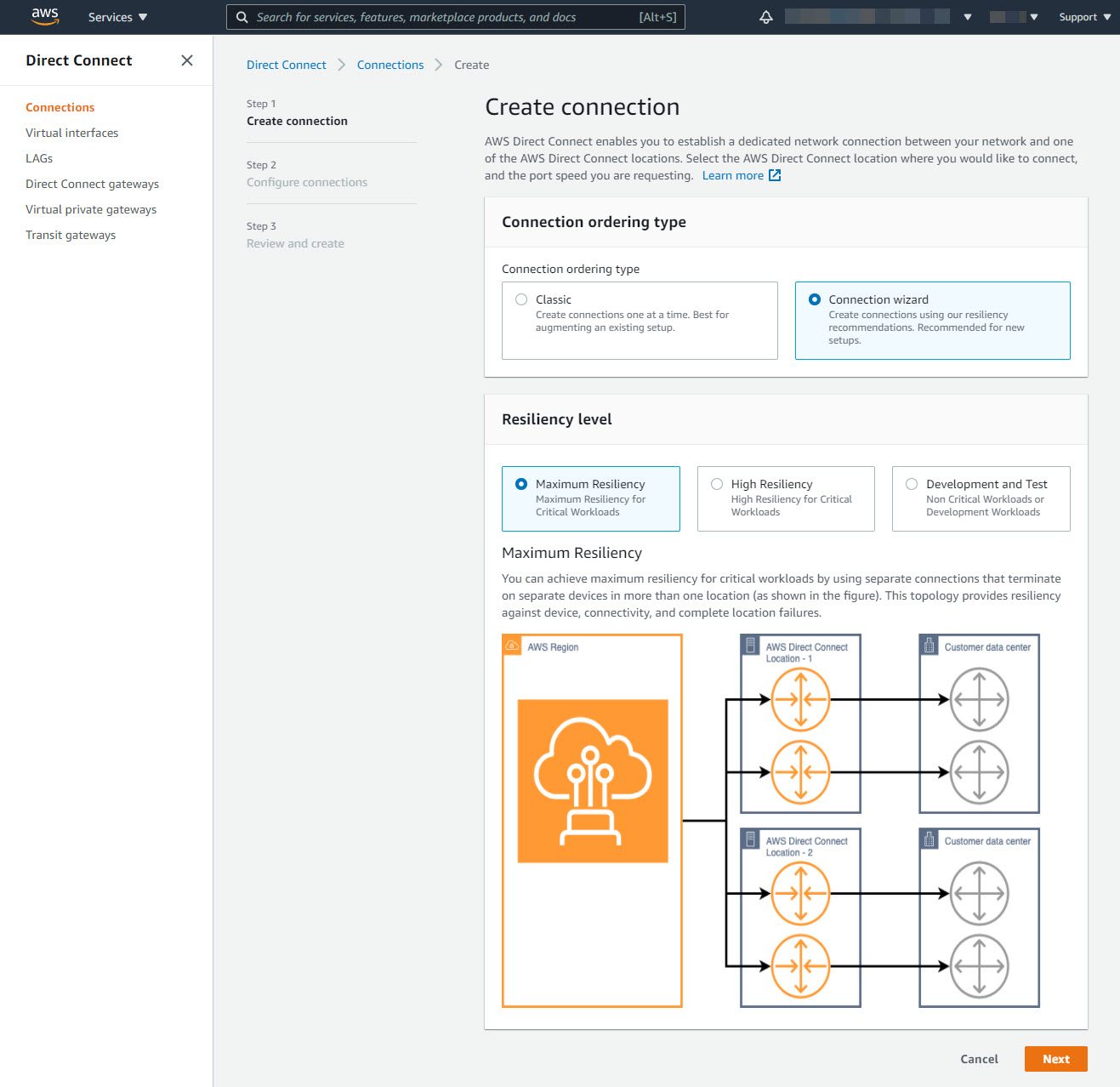Networking & Content Delivery
Explore the AWS Direct Connect Resiliency Toolkit
AWS Direct Connect is a networking service that provides an alternative to connecting to AWS over the internet. When you use AWS Direct Connect, your network traffic bypasses the internet entirely and is instead delivered through a private network connection to AWS. In many circumstances, this can reduce costs, increase bandwidth, and provide more consistent network performance than internet-based connections. With 108 Direct Connect locations around the world (as of this post), and more than 50 Direct Connect delivery partners, you can establish links between your on-premises network and AWS Direct Connect locations in the parts of the globe that matter most to you.
Having this many options and choices adds flexibility to how you can use Direct Connect, both now and down the road. When you are getting started, the Direct Connect Resiliency Toolkit helps you design, order, configure, and test new dedicated connections (that is, a connection where a 1 Gbps, 10 Gbps, or 100 Gbps Ethernet port is dedicated to a single customer). A combination of documentation, console, and CLI tools, the Resiliency Toolkit guides you through the process of deploying and testing in a logical order to help you get started quickly and with confidence.
Overview
As part of the AWS Management Console, the Direct Connect Connection Wizard helps you to determine the number and type of connections required to achieve your SLA objectives. You start by creating a connection:

Figure 1: The AWS Direct Connect console and starting point for the Connection Wizard
Choosing the right resiliency architecture
The AWS Direct Connect Resiliency Toolkit provides three architectural models designed to ensure that you have the appropriate number of connections in multiple Direct Connect locations to achieve different service levels in the event of a connection, device, or location failure. These models are:
Maximum Resiliency: This model recommends the number and configuration of dedicated connections to achieve a SLA of 99.99% (provided you meet all requirements for the SLA listed here).
High Resiliency: This model shows you the way to order dedicated connections in order to achieve a SLA of 99.9% (provided you meet all requirements for the SLA listed here).
Development and test: This model provides you a way to order dedicated connection for your development and test workloads. This model does not allow for any SLA coverage.

Figure 2: Creating a new connection with maximum resiliency in the AWS Management Console
Ordering new connections
Once you have chosen a resiliency model, the Connection Wizard provides guidance on how to order the appropriate number of redundant AWS Direct Connect dedicated connections. Before finalizing your order, the Connection Wizard shows you an order summary for your dedicated connections, with details on the SLA for your chosen configuration and the estimated port-hour cost.
Figure 3: Order summary with the names of new connections, locations, service providers, and port speeds. Also included is the uptime SLA for this configuration, and an estimated monthly cost.
Testing your failover configuration
After you complete the Connection Wizard, use Virtual Interfaces (VIF) and Boarder Gateway Protocol (BGP) peering relationships to connect with your AWS resources. Before going live, use the AWS Direct Connect Resiliency Toolkit failover testing feature to bring down your BGP peering sessions in order to verify that, in the event of a failure, traffic routes to one of your redundant Virtual Interfaces as expected. This helps validate your configuration before sending traffic over your new links. Check out the blog post, Testing AWS Direct Connect Resiliency with Resiliency Toolkit Failover Testing, for a deep dive on this topic.

Figure 4: Running a failover test by bringing down BGP
Conclusion
In this post we looked at only a small part of the Resiliency Toolkit’s capabilities. For more information, check out Using the AWS Direct Connect Resiliency Toolkit in the AWS Direct Connect User Guide. When you are ready, get started with the Direct Connect Resiliency Toolkit in the AWS Management Console.
If you are interested in learning more about Direct Connect, here are some additional resources and recent blog posts:
- Blog: Upgrading AWS Direct Connect to 100 Gbps in 5 steps >>
- Blog: Testing AWS Direct Connect Resiliency with Resiliency Toolkit Failover Testing >>
- Resource: Choosing the right resiliency architecture >>
- Find Direct Connect locations >>
- AWS Direct Connect FAQ >>
- All Hybrid Connectivity blogs >>
###
